Wow 45 active ![]()
- Formiculture.com
- Forums
- Gallery
- Members
- Member Map
- Chat

very nice colony. I like how Camponotus can store lots of food in themselves, much easier to transport food and better survival over the cold period.
I brought them out of hibernation on April 6th. Then moved them into a larger 5x7" picture frame formicarium, which is easy as they all wanted to follow the heat.
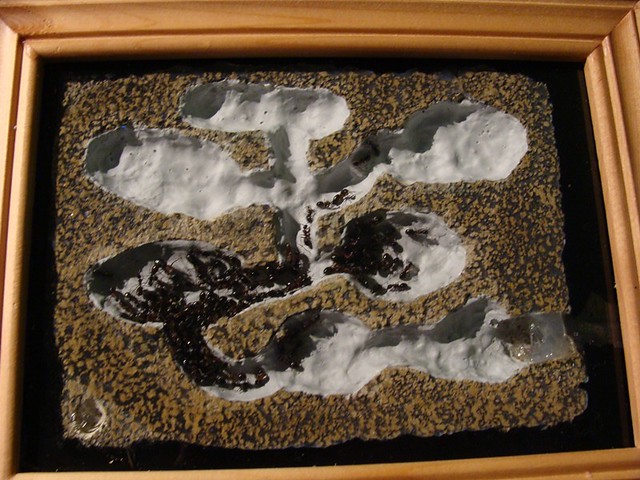
Edited by Crystals, December 28 2017 - 8:31 AM.
"Always do right. This will gratify some people, and astound the rest." -- Samuel Clemens
It looks nice! I like how you painted grout on the (firebrick?).
Yes, I painted grout on firebrick as the naturally dappled surface makes it very hard to see brood.
"Always do right. This will gratify some people, and astound the rest." -- Samuel Clemens
I forgot to mention, they have a dozen small larvae.
Considering they went into hibernation with zero brood I am quite surprised. I moved them to their new nest within hours of bringing them out of hibernation, so they were definitely there when I brough them out of hibernation.
Considering how inactive Camponotus seem to be in hibernation, and how much they crave heat with brood, I have no idea how they tended and raised those larvae in a wine cooler set to 8C (46F). I was not even aware that the queen would lay eggs while in hibernation.
None of my Camponotus herculeanus did that...
I am surprised that there are no eggs yet. With my Camponotus herculeanus, the queens started laying eggs within about 3 days of coming out of hibernation. Although some queens took a couple of weeks to get going. The Camponotus herculeanus workers were also out searching for food a lot more than these are.
Although after a mealworm, mealworm pupae, and a Black soldier fly the Camponotus novaeboracensis gasters are starting to stretch again so they can't be starving. But I have never seen Camponotus turn down food, no matter how stretched their gasters were (unless they were getting ready to hibernate).
I guess they are likely still waking up and soaking up the heat from the heat cable. You can tell exactly where the heat cable is, they are all on top of it. ![]()
Time will tell if this year will be as good as their first season. ![]()
"Always do right. This will gratify some people, and astound the rest." -- Samuel Clemens
Well the queen is deciding to make a fool of me. The eggs started coming the day after my previous post.
In 2 days there are already a dozen eggs...
The "small" 3mm long larvae are being stuffed with as much as they will eat and have easily doubled in size in 3 days.
"Always do right. This will gratify some people, and astound the rest." -- Samuel Clemens
That sounds crazy!
Even crazier is the fact that I did an egg count this morning and there are 8 more eggs than yesterday evening....
"Always do right. This will gratify some people, and astound the rest." -- Samuel Clemens
Wonder if the colony will explode in growth this year then?
The larvae quickly plumped up to a bit bigger than than the current workers and spun cocoons.
One larvae is still growing.
The egg pile is getting larger, but not quite as fast. It is a bit bigger than the size of a pea if they pile it together.
Oddly enough, they are not bringing food into the nest. They are dragging anything half way to the garbage corner, eating all they want, and then dumping it in the garbage pile.
Which is a welcome change for me. Camponotus usually have no issues storing old garbage in their nest.
Here is the lone huge larvae and a pile of eggs.
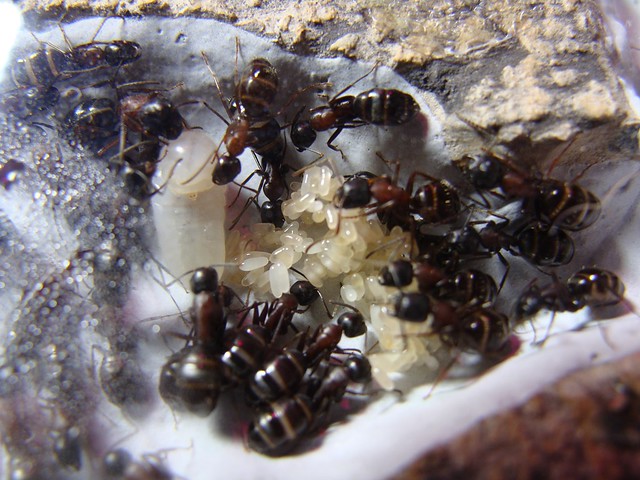
Edited by Crystals, December 28 2017 - 8:37 AM.
"Always do right. This will gratify some people, and astound the rest." -- Samuel Clemens
I have high hopes for this colony. Their numbers grow quicker than any other colony I have. Which, considering that they are Camponotus, is somewhat hard to understand.
May 6, 2015
The queen had been laying a lot of eggs. There are a few pupae from the couple of larvae that appeared during hibernation.
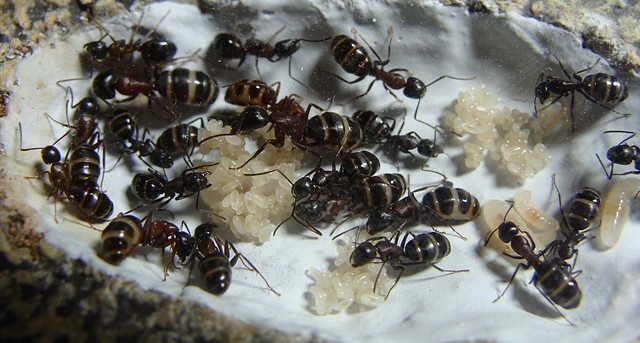
May 15, 2015
The larvae they had when they came out of hibenation have already spun their cocoons. A lot of the eggs are currently small larvae. I can't believe how fast Camponotus novaeboracensis brood develops compared to Camponotus herculeanus brood.
I am finding they are eating a lot right now, they can demolish a large mealworm everyday and their gasters are empty.
Turns out the the pheonix fly larvae wasn't quite frozen and crawled to the most humid spot in the nest. Oddly enough, its presence does not bother the Camponotus (unless they are chopped up like later ones were).
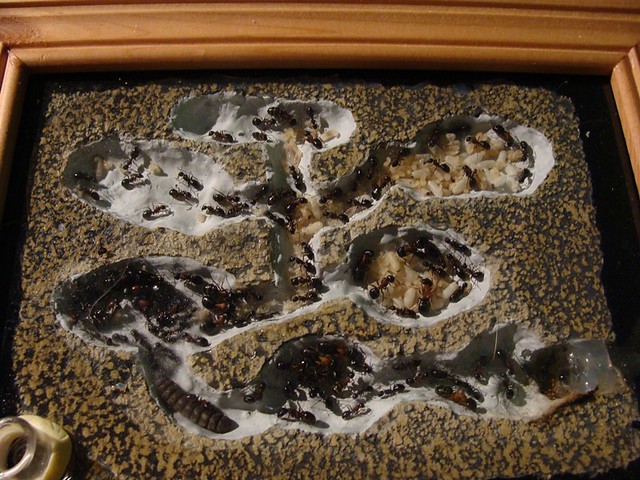
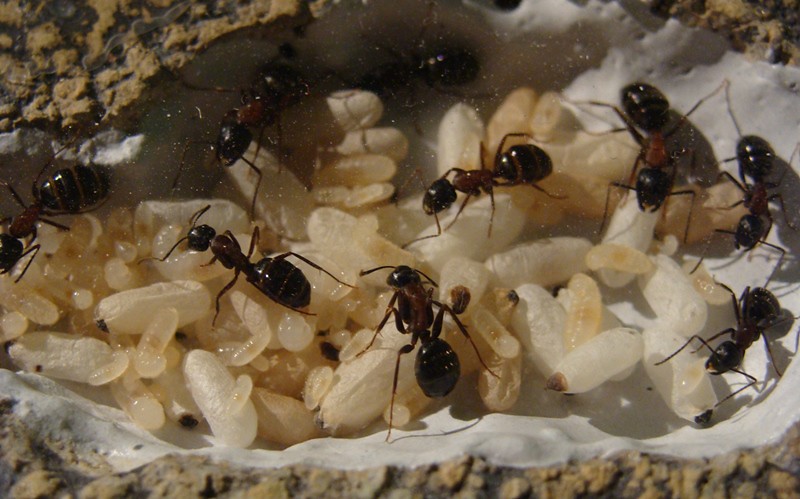
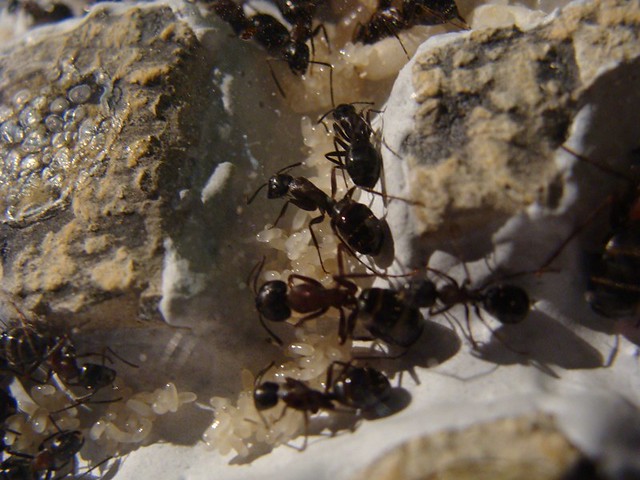
June 13, 2015
More pupae are present, along with quite a few larvae and even more eggs. I was hoping to upgrade their nest after their next hibernation, but I am kind of suspecting that they will outgrow it before then...
After a few days of doubling their insect ration the gasters on the workers are finally distending a bit. Which means that they are not starving. ![]()
And, of course, about 3 days after I started trying to stuff them with food the queen decided that all this extra food meant she could lay even more eggs...
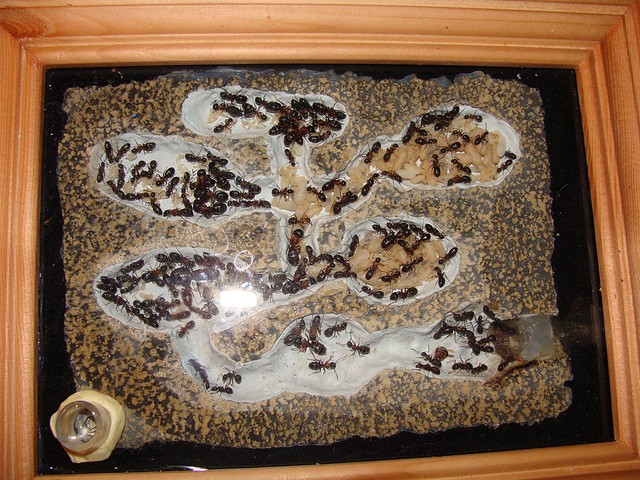
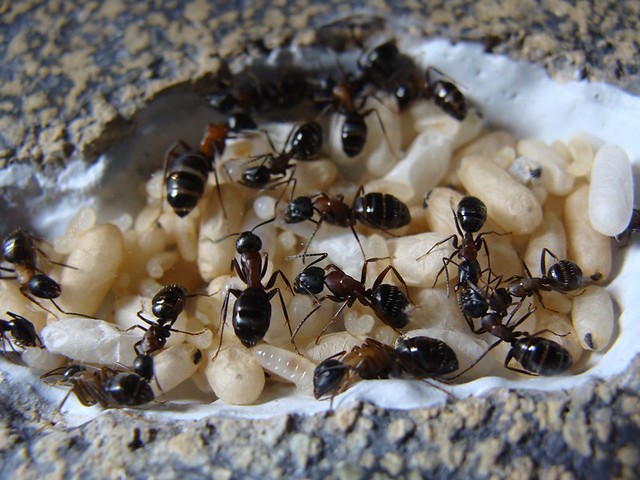
Edited by Crystals, December 28 2017 - 8:54 AM.
"Always do right. This will gratify some people, and astound the rest." -- Samuel Clemens
in the second picture, what is that black bug like thing?
Under the May15th heading? That is a Phoenix worm, the larvae stage of a Black Soldier Fly.
"Always do right. This will gratify some people, and astound the rest." -- Samuel Clemens
Well, I knew it was coming.
They ran out of room. ![]() Those chambers are deep enough for the queen to stand and barely brush her antennae on the glass.
Those chambers are deep enough for the queen to stand and barely brush her antennae on the glass.
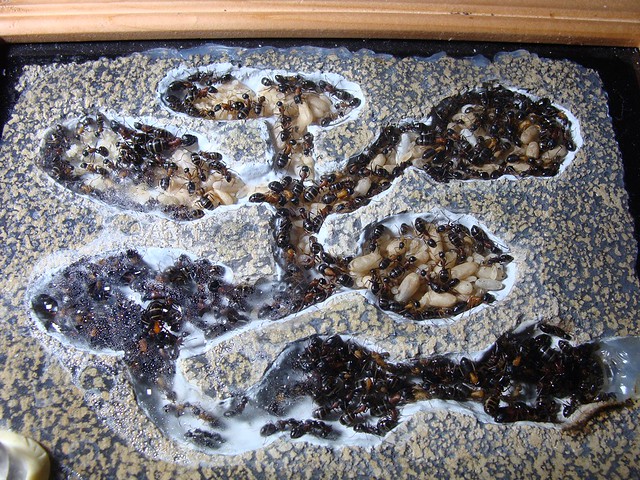
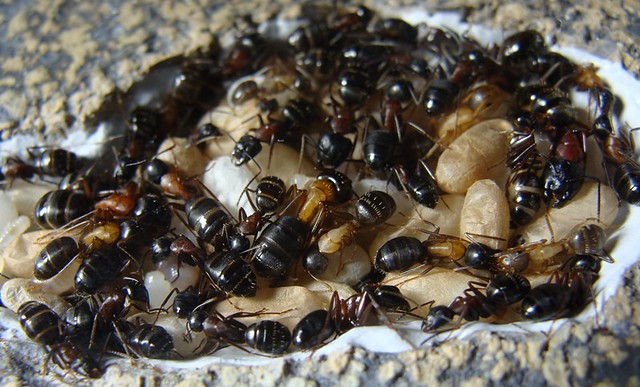
I built them a larger nest. Hopefully it will last them 2 years....
Here I connected the 2 nests, it took them over a week to move (I "encouraged" the last of them to move at the end). Tough move, as some younger workers were positive that the eggs and small larvae had to remain in the old nest, even though it dried out. I ended up putting a bright (and hot) light above the old nest and carefully watched them. Once the stubborn stragglers and the eggs/larvae moved, I disconnected the nest.
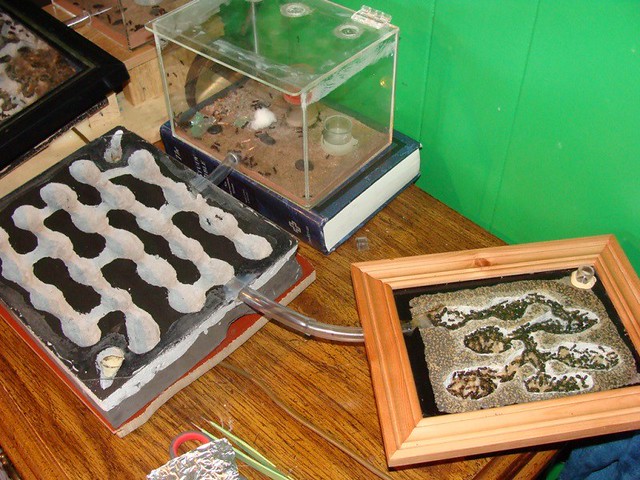
Fully moved in. A bit extra condensation as I overwatered the nest while moving them in.
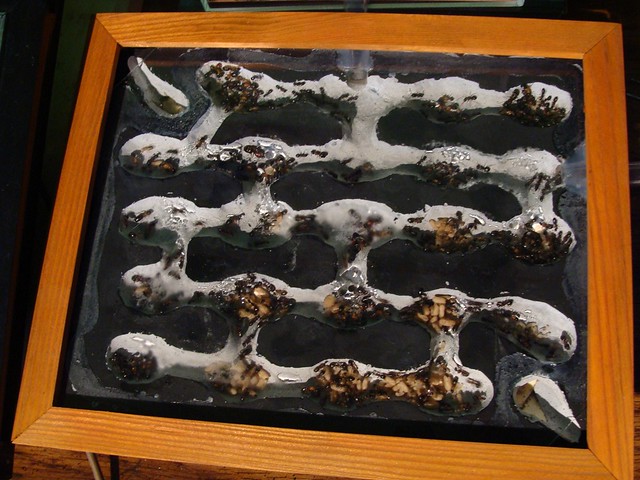
Interesting tip - while Camponotus can walk vertically over olive oil with no issues, they can't walk upside on it if the surface is smooth. Which works well in my outworld with the upside down lip under the lid.
Edited by Crystals, December 28 2017 - 8:58 AM.
"Always do right. This will gratify some people, and astound the rest." -- Samuel Clemens
Interesting design.
Nice colony! Beautiful ants. Love their deep red coloring.
Instagram:
nurbsants
YouTube
California Ants for Sale
Unidentified Myrmecocystus
https://www.formicul...ls-near-desert/
Undescribed "Modoc"
https://www.formicul...mp-ca-5-4-2017/
Camponotus or Colobopsis yogi:
https://www.formicul...a-ca-1-28-2018/
Camponotus us-ca02
https://www.formicul...onotus-us-ca02/
Unidentified Formica
https://www.formicul...l-ca-6-27-2020/
Pencil Case and Test Tube Formicariums
https://www.formicul...m-and-outworld/
Bloodworm Soup
https://www.formicul...bloodworm-soup/
If you look at picture #3 the new nest kinda looks like you painted a chain of spheres. Hey there's an idea: Optical illusion formicariums.cx
Brood always seems to be in various stages. Quite a bit of brood for having next to nothing 3 months ago.
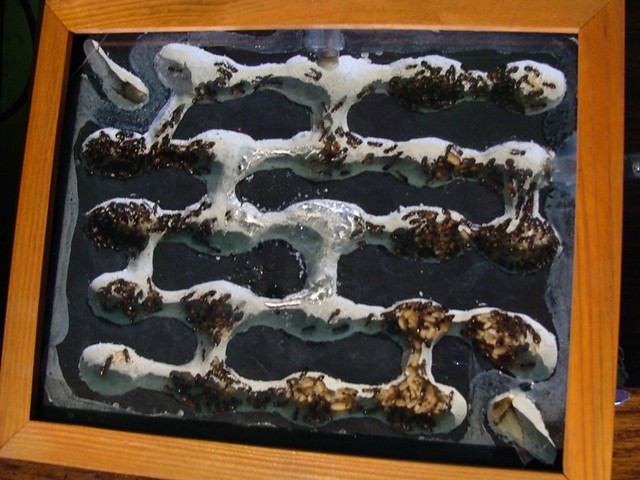
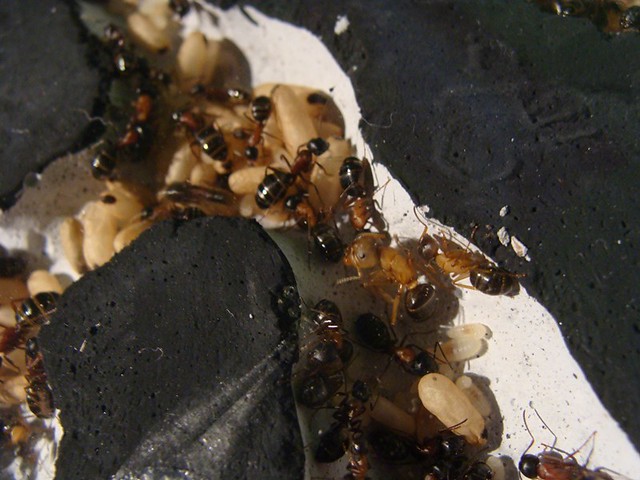
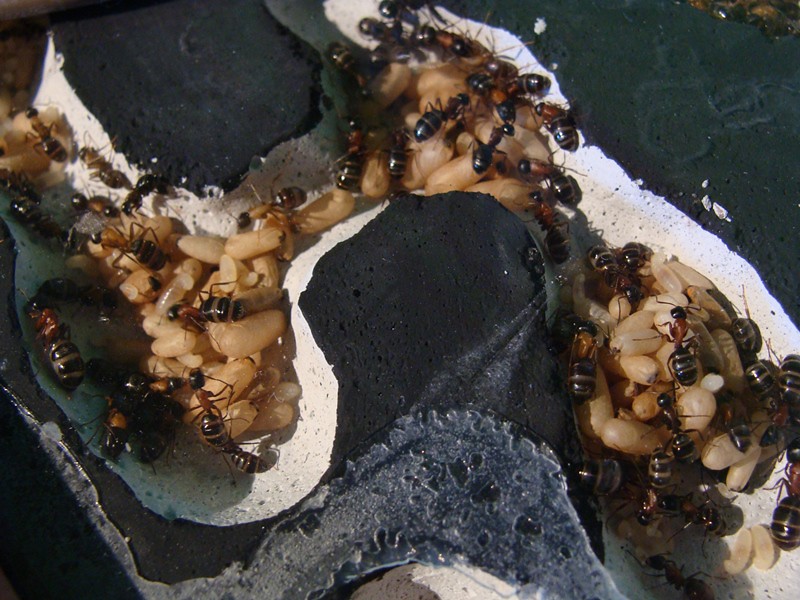
Edited by Crystals, December 28 2017 - 9:04 AM.
"Always do right. This will gratify some people, and astound the rest." -- Samuel Clemens
Ant Keeping →
Ant Keeping Journals →
cooIboyJ's Nylanderia vividula journalStarted by cooIboyJ , Sep 6 2025 |
|

|
||
Ant Keeping →
Ant Keeping Journals →
Ants_Dakota's Camponotus sp. JournalStarted by Ants_Dakota , Jul 13 2025 |
|

|
||
Ant Keeping →
Ant Keeping Journals →
Strickys Formica JournalStarted by stricky_ants , Jun 21 2025 |
|
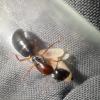
|
||
Ant Keeping →
Ant Keeping Journals →
AntTx's Camponotus sansabeanus JournalStarted by AntsTx , Jun 17 2025 |
|

|
||
Ant Keeping →
Ant Keeping Journals →
RmA's 2nd Camponotus Crusade (Updated 9/21/'25)Started by RushmoreAnts , Jun 3 2025 |
|

|
0 members, 0 guests, 0 anonymous users